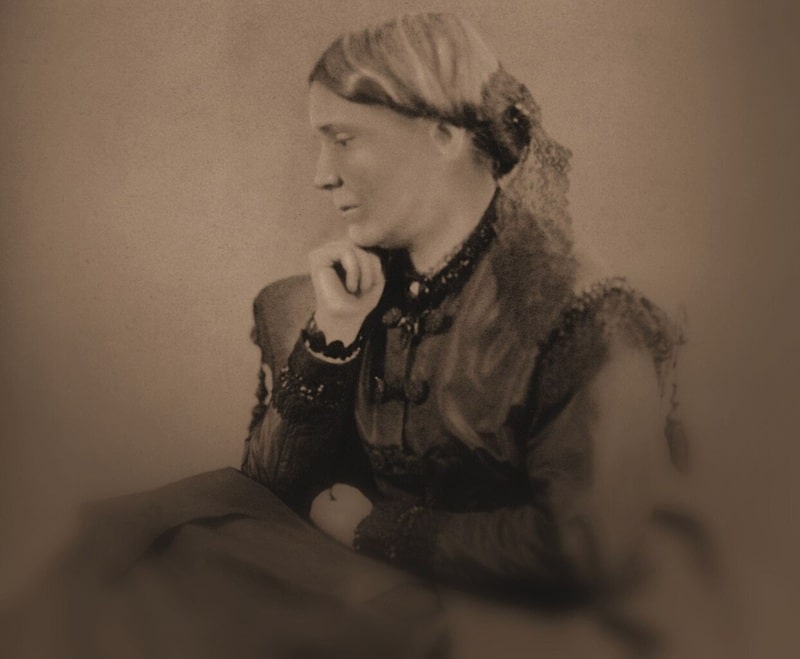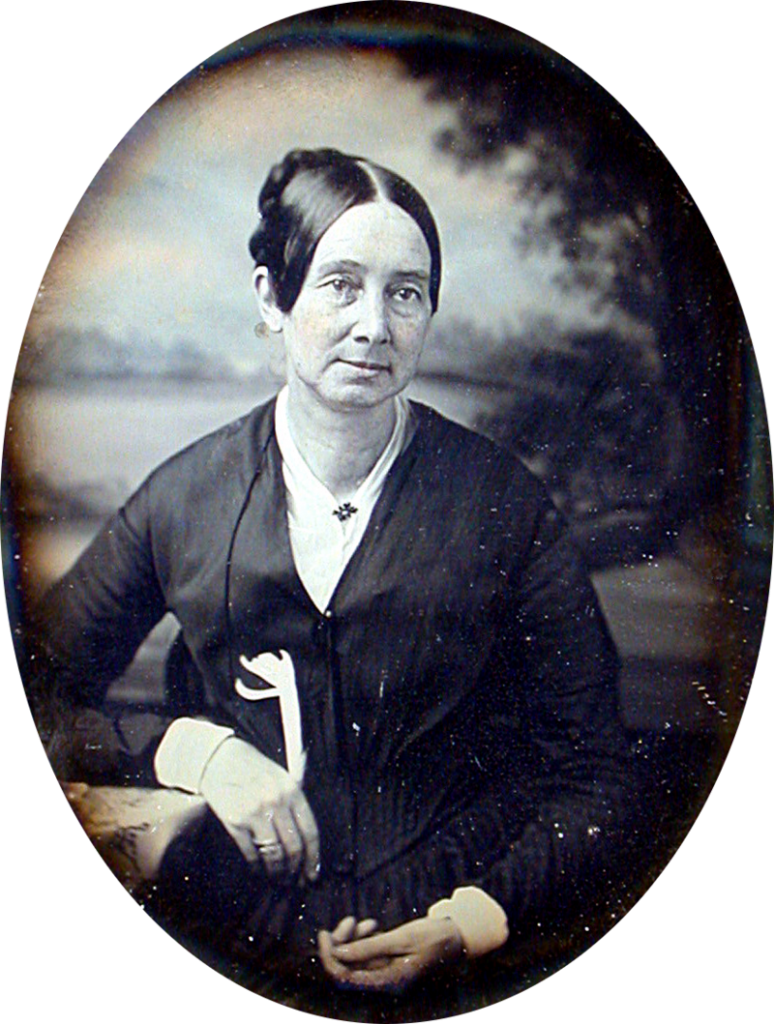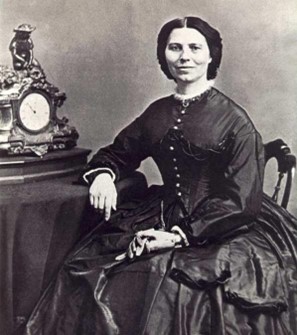Women, Reform, and War
ECW welcomes guest author Nicolas Hoffmann.
The Civil War claimed hundreds of thousands of men, yet few names of the fallen endure. Even fewer women are remembered, though three stand out in medicine: Clara Barton, Dorothea Dix, and Elizabeth Blackwell. Dix, the tireless reformer for the mentally ill, became superintendent of Army nurses; Blackwell, the first American woman to earn a medical degree, organized training programs for nurses; and Barton, later founder of the American Red Cross, gained fame for bringing supplies directly to battlefields.
All three stepped into leadership when the Union desperately needed medical organization, and their work reshaped women’s roles in reform, medicine, and national life. Rivalry, however, complicated their efforts—Dix’s rigid control over nurse recruitment and distrust of Blackwell’s training program narrowed opportunities for many. These conflicts did not stop the professionalization of nursing, but redirected its meaning, ensuring the war transformed not only the nation’s fate but also women’s place in American medicine.
Icons Reconsidered
Over the past 150 years, Dorothea Dix and Elizabeth Blackwell have been celebrated as pioneers, Dix as the reformer who humanized care for the mentally ill, Blackwell as the nation’s first woman doctor. Yet their lives were more complex. Dix’s stubborn authoritarianism and Blackwell’s financial and personal struggles shaped their legacies as much as their compassion.
Dix, born in Massachusetts in 1802, rose from a troubled childhood to become a teacher and author. A trip to England in the 1830s exposed her to reform movements for the mentally ill, inspiring her investigations of American prisons and almshouses. She uncovered appalling neglect and abuse, described in her famous 1843 report to the Massachusetts legislature. For decades she lobbied for hospitals across the country, and though President Franklin Pierce vetoed her 1854 federal funding plan, she remained one of the nation’s best-known reformers when the Civil War began.

Blackwell, born in England in 1821 and raised in Ohio, struggled to enter medical school, but was admitted to Geneva Medical College in New York. In 1849 she became the first American woman to earn a medical degree. Further training in Europe gave her valuable experience, though an accident left her blind in one eye, ending her surgical ambitions. Returning to New York, she opened the New York Infirmary for Indigent Women and Children with her sister Emily and Dr. Marie Zakrzewska. The hospital treated patients and trained women doctors at a time when such opportunities were rare. Blackwell also lectured and published widely, advocating for hygiene, women’s health, and the education of girls.
The Collision of Reformers
The Civil War threw Dorothea Dix and Elizabeth Blackwell into direct conflict. Before the war, the U.S. Army had only 15,000 men and almost no medical system; suddenly, it needed doctors and nurses on a massive scale. In 1861, Dix used her political connections to secure appointment as superintendent of Army nurses, the first woman to hold federal executive authority. Blackwell, backed by Radical Republicans who admired her abolitionist views, had hoped for the role, but was dismissed as too controversial. Dix’s own indifference to slavery made her the “safer” choice, but her rigid style soon caused problems.
Dix accepted only women between ages 35 and 50, plain in appearance and soberly dressed, fearing younger recruits would invite trouble in male hospitals. Many eager volunteers were excluded. She also distrusted Catholic Sisters of Mercy despite their strong nursing reputation, while Blackwell—though proudly Protestant—was willing to collaborate with Catholics.
Shut out of the official system, Blackwell, her sister Emily (the nation’s third woman MD), and Dr. Marie Zakrzewska organized the Women’s Central Association of Relief from their New York infirmary. They trained nurses and distributed supplies, working closely with the U.S. Sanitary Commission, which soon eclipsed Dix’s office in influence. This growing pool of trained nurses later supported Clara Barton, whose battlefield service laid the groundwork for the American Red Cross.
“Dragon Dix”
Dix’s rigid rules and harsh style soon earned her the nickname “Dragon Dix.” Satirists mocked her, generals complained, and even George McClellan asked not to receive any more of her nurses, preferring Catholic sisters instead. Journalist Jane Grey Swisshelm called her a “self-sealing can of horror tied up with red tape.” By 1863, her authority was stripped by General Order 351, which required her appointments to be co-signed by medical directors and gave hospitals the right to choose their own staff. She remained in her post until 1865, but only as a figurehead.

Blackwell, though never holding federal office, gained respect through her work with the Sanitary Commission and her continued push for women’s medical education. The contrast was stark: Dix, once the most powerful woman in Washington, undone by her rigidity; Blackwell, once sidelined, rising through persistence and professionalism.
Meanwhile, Clara Barton emerged as the enduring hero of Civil War medicine. Her tireless battlefield service and later creation of the American Red Cross set the standard for compassionate medical care in war.
After the War
The Civil War marked both the peak and decline of Dorothea Dix’s career. She returned to mental health reform during Reconstruction, but her reputation never fully recovered. She spent her final years in a private suite at the New Jersey State Hospital, where she died in 1887.
Elizabeth Blackwell, by contrast, built on her wartime work. In 1868 she helped establish a medical school for women in New York before moving permanently to England, where she co-founded the London School of Medicine for Women and remained an active voice in public health until her death in 1910.

Clara Barton’s influence only grew. She became a national symbol of service, leading relief efforts after the Johnstown Flood and the Galveston Hurricane, and secured U.S. recognition of the Red Cross treaty, cementing the Red Cross as the enduring model of wartime humanitarian care.
Legacy
In her moment, Dorothea Dix seemed the more powerful, commanding a federal office and mobilizing nurses. Yet history has favored Elizabeth Blackwell, whose institutions and advocacy opened lasting opportunities for women in medicine.
Their rivalry highlights the paradox of women’s leadership during the war. The conflict opened unprecedented doors—women held federal authority, trained nurses, and managed relief efforts—but under narrow terms, with leaders judged by rigid standards of “acceptable” womanhood.
Dix represented an older model of moral authority: stern, self-sacrificing, and deferential to men. Blackwell embodied the professional woman: educated, scientific, and determined to claim legitimacy through skill. Their clash revealed reform’s growing pains, caught between tradition and modernity.
Both women changed history, Dix by proving a woman could wield federal authority, Blackwell by proving women could master the medical profession. Together, they capture both the promise and the limits of women’s expanded roles during America’s most devastating conflict, a legacy that still resonates today.
Dr. Nicolas “Nic” Hoffmann is a historian of the Civil War and the history of medicine, teaching at Marist School and serving as adjunct faculty at Georgia Gwinnett College. His dissertation, Off the Bloodied Grounds: The Civil War and the Professionalization of American Medicine, examines how wartime systems reshaped American healthcare. He also produces public-facing history through classroom simulations and podcasts.
Selected Bibliography
- Brown, Thomas J. Dorothea Dix: New England Reformer. Harvard University Press, 1998. Harvard Historical Studies.
- Burton, David H. Clara Barton: In the Service of Humanity. Greenwood Press, 1995. Contributions in Women’s Studies, vol. 148.
- Deutsch, Albert. “Dorothea Lynde Dix: Apostle of the Insane.” The American Journal of Nursing, vol. 36, no. 10, 1936, pp. 987-997, doi:10.2307/3413570.
- Marshall, Helen E. Dorothea Dix, Forgotten Samaritan. Russell & Russell, 1967.
- Morantz-Sanchez, Regina. “Feminist Theory and Historical Practice: Rereading Elizabeth Blackwell.” History and Theory, vol. 31, no. 4, 1992, pp. 51-69.
- Oates, Stephen B. A Woman of Valor: Clara Barton and the Civil War. Free Press, 1994.
- Sahli, Nancy. “A Stick to Break Our Heads With: Elizabeth Blackwell and Philadelphia Medicine.” Pennsylvania History, vol. 44, no. 4, 1977, pp. 335-347.
- Nimura, Janice. The Doctors Blackwell: How Two Pioneering Sisters Brought Medicine to Women and Women to Medicine
While the article credits Dix and Blackwell with transforming women’s roles in medicine, it overstates the degree to which their rivalry “redirected” nursing’s meaning. In reality, the professionalization of nursing advanced largely despite their disputes, driven by grassroots volunteers and the Sanitary Commission’s practical needs rather than by elite reformers’ philosophies. The focus on their personal clash risks minimizing the broader collective effort of thousands of women whose work—not rivalry—truly reshaped wartime medical care.
A very nice summary of an important subject. Thank you.